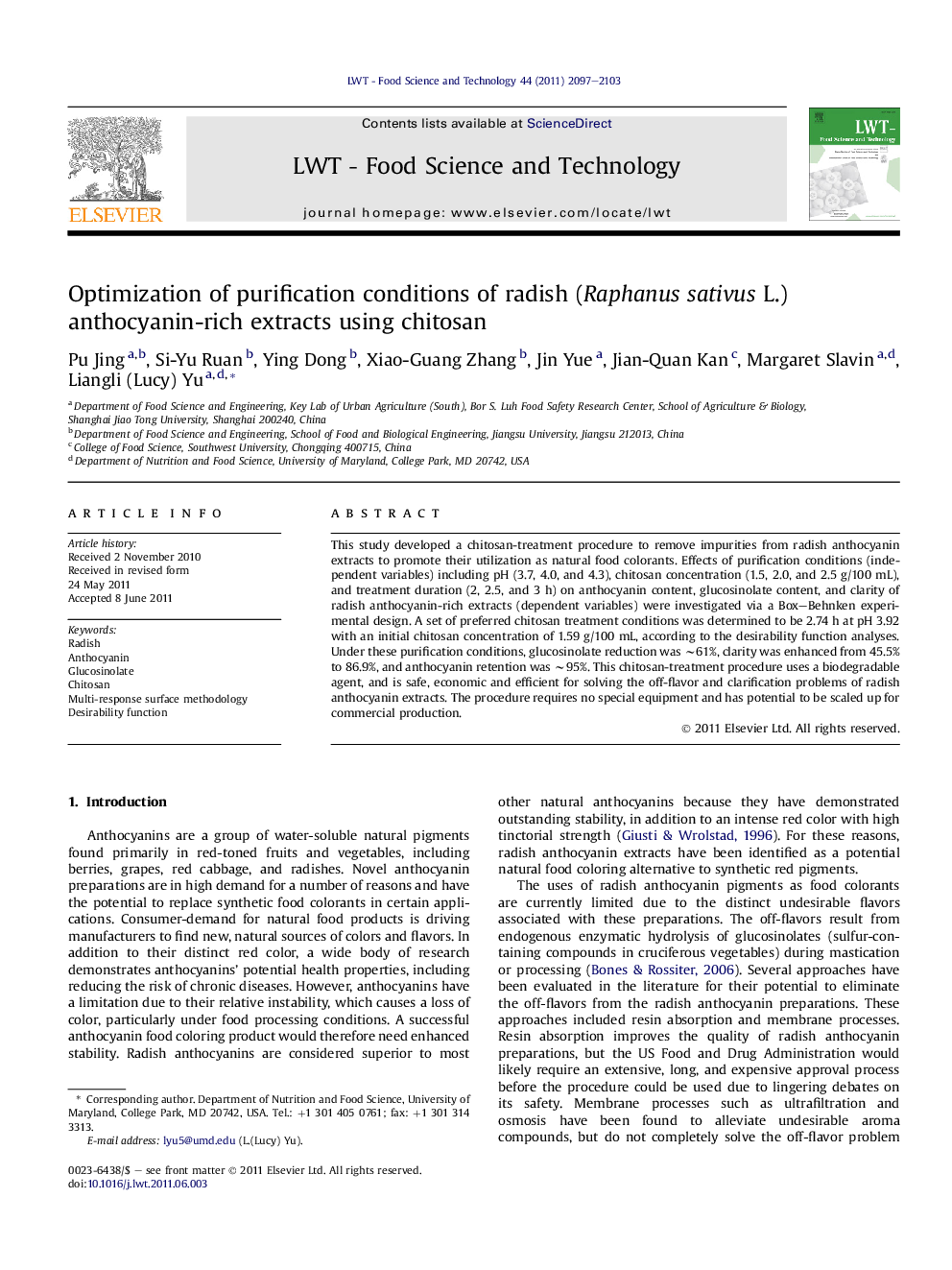| Article ID | Journal | Published Year | Pages | File Type |
|---|---|---|---|---|
| 6405829 | LWT - Food Science and Technology | 2011 | 7 Pages |
This study developed a chitosan-treatment procedure to remove impurities from radish anthocyanin extracts to promote their utilization as natural food colorants. Effects of purification conditions (independent variables) including pH (3.7, 4.0, and 4.3), chitosan concentration (1.5, 2.0, and 2.5Â g/100Â mL), and treatment duration (2, 2.5, and 3Â h) on anthocyanin content, glucosinolate content, and clarity of radish anthocyanin-rich extracts (dependent variables) were investigated via a Box-Behnken experimental design. A set of preferred chitosan treatment conditions was determined to be 2.74Â h at pH 3.92 with an initial chitosan concentration of 1.59Â g/100Â mL, according to the desirability function analyses. Under these purification conditions, glucosinolate reduction was â¼61%, clarity was enhanced from 45.5% to 86.9%, and anthocyanin retention was â¼95%. This chitosan-treatment procedure uses a biodegradable agent, and is safe, economic and efficient for solving the off-flavor and clarification problems of radish anthocyanin extracts. The procedure requires no special equipment and has potential to be scaled up for commercial production.
⺠Glucosinolate hydrolyses cause off-flavor problems in radish anthocyanin extracts. ⺠Chitosan removes glucosinolates effectively to improve radish pigment quality. ⺠An optimized chitosan treatment is initial 1.59 g/100 mL at pH 3.92 for 2.74 h. ⺠The optimal treatment reduces 61% glucosinolates while 95% anthocyanin remaining.
